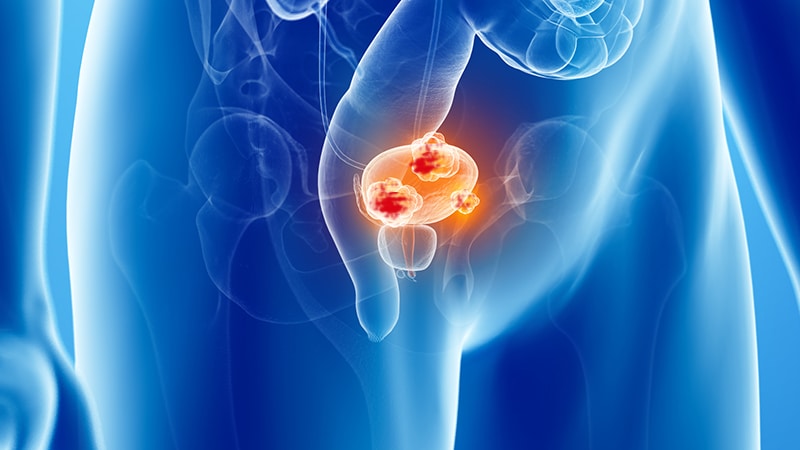
Medscape Medical News April 15 2021. Worldwide urinary bladder cancer is the ninth most common cancer in both sexes preceded by malignancies of the.

December 01 2019 MEDLINE Abstract Utility of the EORTC risk tables and CUETO scoring model for predicting recurrence and progression in non-muscle-invasive bladder cancer patients treated with routine second transurethral resection.
Bladder cancer medscape. The two principal treatment choices in muscle-invasive bladder cancer are radical cystectomy and transurethral resection of bladder tumor TURBT followed by concurrent radiation therapy. Approximately 80-90 of patients with bladder cancer present with painless gross hematuria. Most patients with this classic presentation should be considered to have bladder cancer.
The gold standard for bladder cancer detection has been cystoscopy guided by white light. For nearly 10 years however European centers have used fluorescence to improve cystoscopic detection of bladder tumors. 5-aminolevulinic acid instilled intravesically approximately 1 hour before cystoscopy induces macroscopic fluorescence of tumor tissue in the bladder.
Medscape Medical News April 15 2021. How to Avoid Cystectomy in Muscle-Invasive Bladder Cancer. Medscape Medical News June 8 2021.
Low Diagnostic Yield With Cystoscopy and CT. Drugs currently used in the management of advanced bladder cancer include combinations of gemcitabine and cisplatin. Gemcitabine 1000 mgm 2 on days 1 8 and 15 plus cisplatin 70 mgm 2 IV on day.
Image courtesy of Medscape. Worldwide urinary bladder cancer is the ninth most common cancer in both sexes preceded by malignancies of the. In general the papillary tumor is diagnosed first and CIS is discovered during the evaluation and treatment of the papillary tumor.
Only 10 of patients with bladder cancer have a. Bladder cancer ranges from unaggressive and usually noninvasive tumors that recur and commit patients to long-term invasive surveillance to aggressive and invasive tumors with high. The American Cancer Society states that prompt attention to bladder symptoms is the best approach for finding bladder cancer in its earliest.
Overview of BCG Immunotherapy Bacillus Calmette-Guérin BCG a live attenuated strain of Mycobacterium bovis is currently the only agent approved by the US Food and Drug Administration for. Transurethral resection of bladder tumors with or without Bacillus Calmette-GuÃrin BCG is used for treatment of superficial bladder cancer. In the United States radical cystectomy is standard treatment for muscle-invasive disease with adjuvant or neoadjuvant chemotherapy often administered despite lack of definitive data regarding efficacy.
Treatment with cyclophosphamide Cytoxan Neosar and ifosfamide Ifex may lead to the development of bladder cancer through their metabolite acrolein. This treatment approach which involves transurethral resection of bladder tumor TURBT followed by systemic therapy has long been known to be effective for achieving durable bladder-intact. The goal of this activity is to provide clinicians with the latest data and concepts regarding the diagnosis and treatment of and adverse event management for patients with bladder cancer.
Upon completion of this activity participants will. Demonstrate improved performance associated with. Determining appropriate treatment strategies for.
The risk factors of urinary tract infection after transurethral resection of bladder tumors. December 01 2019 MEDLINE Abstract Utility of the EORTC risk tables and CUETO scoring model for predicting recurrence and progression in non-muscle-invasive bladder cancer patients treated with routine second transurethral resection. In patients with confirmed muscle-invasive bladder cancer use computed tomography CT of the chest abdomen and pelvis as the optimal form.
However Karis Betts health information manager at Cancer Research UK told Medscape Medical News that the study estimates the proportion of bladder cancers that trace chemicals in.